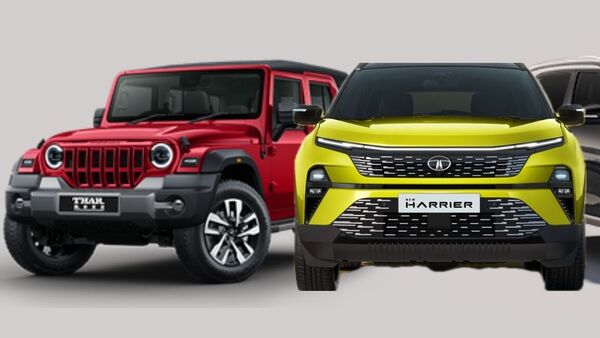Indian auto industry is fast emerging as a global export hub, with carmakers like Tata Motors and Mahindra expanding shipments to new markets. From compact cars to EVs, “Made in India” vehicles are driving growth worldwide.

View Personalised Offers on
The strategic shift of India’s largest motor group conglomerates, Mahindra & Mahindra (M&M) and Tata Motors Passenger Vehicles (TMPV), towards greater integration in the South African market is a stroke of commercial genius intersecting with aggressive industrial policy. This is no longer merely an export destination; it is the designated continental manufacturing nexus, a calculated response to the government’s aggressive push for localization under the South African Automotive Master Plan (SAAM 2035).


The SAAM 2035 imperative and the SKD vs CKD battle
The South African government, acutely aware of the declining local content in its auto industry, designed SAAM 2035 with clear, high-stakes objectives: to boost the percentage of locally-sourced components in assembled vehicles from a baseline of approximately 38 per cent to a demanding 60 per cent by 2035, while simultaneously growing South African vehicle production to 1 per cent of global output (approximately 1.4 million vehicles per annum) and doubling employment in the automotive value chain. The single biggest policy instrument driving this Indian investment is the pressure to transition from Semi-Knocked Down (SKD) to Complete Knocked Down (CKD) assembly.
Also Read : Mahindra bets on tier-2 cities as next big growth driver for EV adoption
This is an essential distinction: SKD is a minimal assembly process offering limited value-add and minimal local job creation, epitomized by Mahindra’s current Durban facility for the Pik Up; conversely, CKD is a full-scale manufacturing process requiring heavy investment in body-stamping, welding lines, and paint shops, which is the necessary gateway to unlocking the full Automotive Production and Development Programme (APDP) incentives, including vital tax rebates and duty credits for import parity.
The explicit commitment from Indian manufacturers to transition to this comprehensive CKD model is thus considered a major victory for the Trade Ministry, directly addressing the industry’s risk of becoming an import-heavy, assembly-only economy.
Mahindra’s strategic gambit
Mahindra’s action is the most serious expression of local commitment to date, with a definite road map going beyond mere sales numbers. Since the February 2025 Memorandum of Understanding (MoU) with the Industrial Development Corporation (IDC), the feasibility study for the CKD plant has been at the top of corporate priorities, conceptualized not merely for the production of the top-of-the-line Pik Up, but deliberately for future model localization, specifically for the next-generation Global Pik-Up, which is poised for several international markets.
To support this trajectory, the existing facility in the Dube Tradeport Special Economic Zone (SEZ) in KwaZulu-Natal (KZN) has already seen a rapid capacity surge from 900 to 1,500 units per month to meet the booming demand for its rugged LCVs; this strategic location in the SEZ, adjacent to King Shaka International Airport and Durban’s port, explicitly positions it as an export-oriented manufacturing hub for the Southern African Development Community (SADC) and beyond.
Also Read : Tata Motors re-enters South Africa with Tiago, Punch, Curvv and Harrier
Most importantly, the current feasibility study is strategically incorporating localization of New Energy Vehicle (NEV) production, indicating that Mahindra wants to leverage South Africa as one of its major bases for exporting its electric platform, and quite possibly exploit local mineral beneficiation potential for batteries as the world moves toward electrification.
Tata’s resurgent play
Tata Motors’ re-entry in August 2025 is prompted by a measured attack on the high-volume, if very price-sensitive, R250,000 to R450,000 (US$13,000 to US$24,000) value marketplace. Central to this strategy is the deliberate positioning of safety as a core differentiator: having cemented its status as a safety pioneer in India with models rated 4 or 5 stars by Global NCAP, Tata is offering a lineup, the Tiago, Punch, Curvv, and Harrier, that contrasts sharply with some new entrants lacking this safety pedigree, thereby aiming to be the premium, safety-focused choice in the value bracket.
This is immediately evident in the flagship Harrier launch, which arrives equipped with Level 2 ADAS functionality featuring 20 key elements and up to six airbags, establishing a new benchmark for its class.
Furthermore, recognizing that its previous 2019 exit was hindered by a weak sales and service footprint, Tata secured a powerful, exclusive alliance with Motus Holdings, South Africa’s largest automotive group, which immediately grants TMPV access to 40 dealerships nationwide with an immediate plan to grow to 60 by 2026, a high-quality network expansion considered the essential lubricant for driving volume sales and customer confidence.
This ambitious re-entry is underpinned by Tata’s dramatic growth in India and targets a challenging 6 per cent to 8 per cent market share in the mid-term, directly engaging with established Asian rivals like Suzuki and Hyundai, whose imports from India already command significant passenger car volumes.
Get insights into Upcoming Cars In India, Electric Vehicles, Upcoming Bikes in India and cutting-edge technology transforming the automotive landscape.
First Published Date: 27 Oct 2025, 17:24 pm IST







